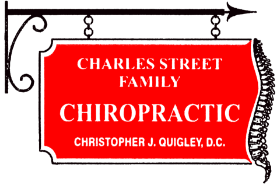The steady rhythm of feet hitting the pavement, the wind blowing past, and the pulse of determination—this is what running encapsulates for many athletes. In a city like Boston, MA, with such a rich racing history, running is often about more than keeping fit—it’s an exciting competitive sport, a stress reliever, and a significant part of a healthy lifestyle. However, pushing your body to improve creates the potential for running injuries, and being injured can jeopardize a runner’s performance and well-being.
The chiropractors at Charles Street Family Chiropractic are committed to promoting the health and vigor of Boston’s running community. We are experts at addressing running-related injuries, using proven chiropractic techniques. to help you heal faster and avoid future injuries.
Understanding Common Running Injuries

Running in Boston presents specific challenges with seasonal weather changes and diverse terrain. Icy winters lead to treacherous paths, while summer heat and humidity can cause dehydration. All of these factors indirectly contribute to the risk of running injuries.
Apart from weather and trail conditions, several internal factors can cause running injuries, including:
- Overuse: Repeated stress on the same bones and tissues without adequate recovery can result in overuse injuries.
- Poor biomechanics: Suboptimal foot mechanics, such as rolling your foot too much inward (overpronation) or outward (supination), may predispose you to injury.
- Inadequate footwear: Shoes that lack sufficient arch support or poorly match a runner’s foot structure can exacerbate biomechanical issues.
- Training errors: Abrupt changes in training intensity, frequency, or duration can strain the body, leading to injuries.
The Importance of Early Detection and Treatment
The adage, “an ounce of prevention is worth a pound of cure,” is particularly true regarding running injuries. Early detection and treatment are crucial for preventing complications, chronic pain, and irreversible damage.
At Charles Street Family Chiropractic, we provide early detection and customized treatment plans for injured runners. Our comprehensive understanding of human anatomy and biomechanics helps us offer effective, non-invasive treatments to promote the body’s innate healing capabilities.
5 Most Common Running Injuries
Every stride you take makes an impact, and sometimes, these impacts lead to injuries. Here are five common injuries from running that you should be aware of:
- Runner’s knee: Unsurprisingly, the injury nicknamed “runner’s knee” is common among runners. Characterized by pain around or behind the kneecap, this condition often results from overuse or biomechanical problems. Symptoms may worsen while walking up and down stairs, kneeling, or squatting.
- Achilles tendinitis: This condition affects the Achilles tendon, which attaches your heel to your calf. Inflammation causes pain in the heel and the back of the lower leg. Achilles tendonitis is typically caused by excessive training, poorly chosen footwear, or tight calf muscles.
- Plantar fasciitis: This common foot injury from running affects the arch of the foot, causing pain even when lying down. It’s often triggered by overpronation, inadequate footwear, or tight calf muscles.
- Shin splints: Marked by pain running along the tibia, shin splints most often occur after ramping up the training intensity.
- Ankle sprains: Tripping, falling, or simply landing wrong may cause you to roll your ankle, stretching or tearing the ligaments there. A sprained ankle may swell, turn red, and hurt when you put weight on it.
Injury Prevention Strategies and Tips for Runners
Preventing running injuries involves listening to your body and adopting good training habits. Here are some tips to help keep injuries at bay:
- Making sure your Spine and Pelvis are working properly: To keep you running at your best you need to ensure proper function of your kinetic chain which starts at the foot, goes into the knee then the hips, and ends with the pelvis.
- Proper form and technique: Running with correct posture and foot strike reduces the risk of knee, ankle, and foot injuries.
- Gradual progression: Avoid sudden increases in training load. The general rule is to increase your running volume by no more than 10 percent per week.
- Strength training: Incorporate weightlifting or similar exercises into your training routine to enhance muscle strength and joint stability.
- Rest and recovery: Give your body time to recuperate and listen to its cues. Rest days are crucial for preventing overuse injuries.
- Daily stretching: Dynamic stretches before running and static stretches after running are effective for increasing flexibility, improving circulation, and preventing muscle tightness, thereby reducing the risk of common running injuries.
Trust Boston’s Premier Chiropractor
Staying injury-free as a runner is a multifaceted endeavor. Knowing what injuries to watch out for and how to prevent them is an important first step. Then, seeking timely treatment is crucial to cut down your recovery time.
At Charles Street Family Chiropractic, we take a patient-centered approach and offer advanced techniques to treat running injuries effectively. With the promise of quality care and friendly staff interactions, you can feel confident choosing our Boston chiropractor for help getting back on your feet. Contact us at 617-720-1992 or fill out our online form to schedule an appointment today.
